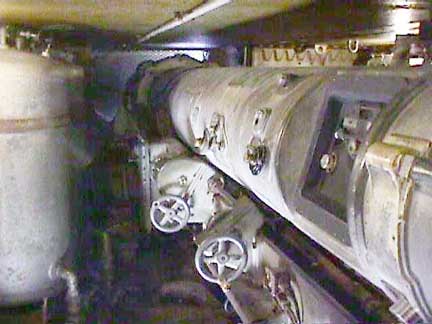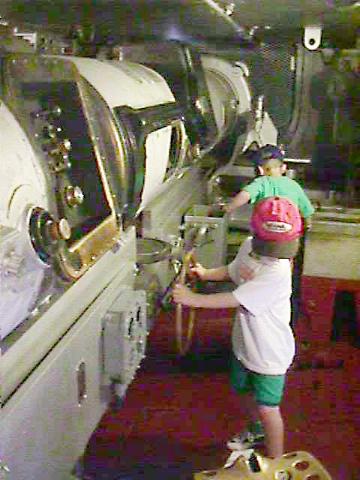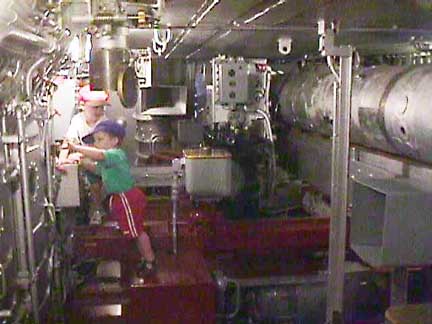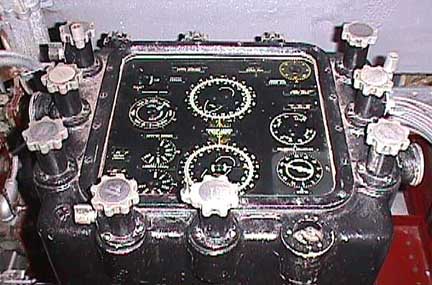 |
 |
 |
|
|
These are essentially the largest pair of binoculars one is apt to find. To pin range with optics, one wants two lenses as far apart as practical. Here, the left lens tube is shown projecting out the left side of turret three. Below, the right lens tube is shown. This is a back up system. The main optical range finders are Spot One and Spot Two, on top of the main and aft citadel towers, to be shown later in the tour. However, if the turret lost contact with fire control, they could continue to fire under local control.
 |
|
|
 |
|
|
The range finder is to the right. The guns are to the left. The light is so poor in the loading rooms that even with Photoshop post processing, I'm not showing the results. The undersized crew members don't give a correct impression of how small this room seems. I left with a few lumps on my head. That is a periscope just over the boys. The gear computer shown below is behind them and to the right.
 |
|
|
Still semi-functional. Knobs are used to input numbers such as target speed, target course, range to target, wind speed, wind direction, own speed, own course, etc... The output directs the guns. This is the small version, located in each main turret, the back up used in case of failures. These allow independent targeting should communications with main fire control be lost. The significantly larger primaries were located in the citadel.
Calculating fall of shot is still an interesting problem with modern computers. I'm a software guy. I can see how the targeting problem is very solvable with semiconductors and modern computers. That they once solved these problems using knobs and gears really impresses me.
The computer shown above is turret 3's. The glass and upper display dials of turret 1's computer has been smashed by less than respectful tourists. On the USS Iowa's home page, a web board is discussing how much access the public should have to the Iowa class ships as they are converted to museums. The opinions vary from open up everything to lock up everything. Some compromise between the two is extremes is necessary. The turrets of the Massachusetts open to the public have been abused over the decades. Turrets are too small to partition off fragile areas with plexiglas. You either open a turret, or you don't. However, through most of the ship, a sheet of plexiglas is placed between the tourists and the more fragile displays. This allows unescorted tours, but is a pain to a web site master with a digital camera. The light levels are generally to low for flashless, and the flash reflects off the plexiglas, ruining any picture.
When I look at the radio room or the radar room and think of the condition of the turrets, plexiglas seems a very good idea. Still, the extant plexiglas on the Massachusetts is getting faded and scratched. Sometime soon they are going to have to start replacing the original plexiglas.
 |
Shore - Dock -
Engines - Dry-dock
- Perspectives
Anchor - 16 Inch -
George - Turret 3
- Shells - Magazines
- Jean Bart - Armor
Hatches - Five
Inchers - Inside 5" - Quad
40s - Turkey Trot
AA Directors - Sky -
Spot - Radar -
Last Look - History
- BB Names
Massachusetts - Galveston
- Homepage - NavShips
& NavRing